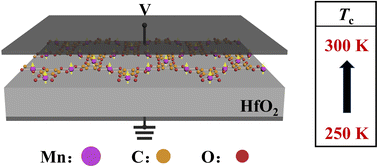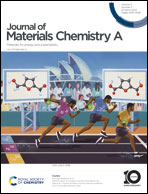Room-temperature magnetism in two-dimensional metal–organic frameworks enabled by electrostatic gating†
Abstract
Two-dimensional (2D) magnetism has attracted intense attention in the area of low-dimensional materials and devices, with intriguing physics emerging and significant potential for applications in energy-efficient data storage and quantum computing. Although a robust magnetic order sustainable under room temperature is the most relevant issue for its practical applications, high temperature magnetism is rarely reported. 2D magnets obtained to date are often exfoliated from van der Waals atomic crystals with bulk magnetism. In this work, we propose a new type of 2D magnets, 2D conjugated metal–organic frameworks (MOFs), which are constructed by magnetic metal ions and conjugated ligands on a honeycomb-kagome lattice. By combining chemical modifications and an electrostatic gating approach, we attain a MOF, Mn3(THQ)2 (THQ = tetrahydroxyquinone) possessing the square-planar Mn–O coordination and minimal-sized ligand, which exhibits an ultra-high Curie temperature of 250 K in the neutral monolayer and 300 K in the hole doped one. These findings manifest both chemical and electrical means as powerful tools to tailor the magnetism of 2D MOFs on demand, and further highlights their prospect for applications in ultracompact spintronic devices.



 Please wait while we load your content...
Please wait while we load your content...